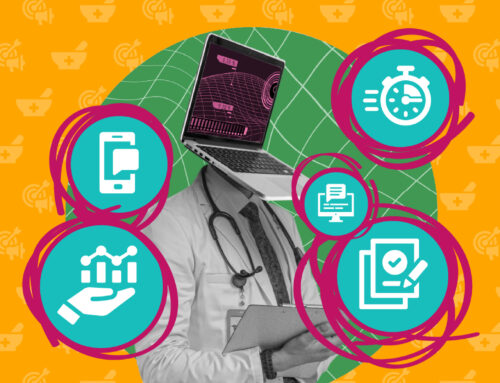How We Use Big Data to Make Better Marketing Decisions
From personalizing messages and understanding your audience, explore how our team uses insights gained from big data to craft more effective, more efficient and just plain better marketing strategies.
Every aspect of marketing uses data to some degree. However, it’s big data – the vast and ever-expanding volume, variety and complexity of information available – that is redefining marketing in the digital age.
From understanding subtle consumer behaviors to streamlining massive ad campaigns, data forms the backbone of modern marketing strategies. And it’s the ability to efficiently collect, analyze and actualize large amounts of information that’s leading the transformation from static approaches into dynamic, data-driven marketing strategies.
Here are some of the ways in which the Responsory team uses big data in marketing to improve outcomes for our clients.
Shaping Marketing Strategy
Grant A. Johnson, President and CEO
For marketers, the insights data offers and how we use them in our work is more important than the actual data itself. It’s the raw material that, when combined with an integrated strategy and years of experience, can significantly improve campaign effectiveness. That’s why I encourage my team to get comfortable with the tools and techniques that help us use marketing data to the fullest.
For example, we can use big data to:
- Personalize Marketing Messages: Even in our own email marketing, we use data to personalize marketing messages to specific customer segments. This helps us create more relevant and engaging marketing campaigns that provide value to our clients and grow our business.
- Target Our Marketing Efforts: With data insights, we can hone in on specific customer groups or geographic areas, making every marketing dollar count. This means delivering the perfect message to the right audience, every time.
- Measure Campaign Effectiveness: We can’t claim “measurable marketing” without having quality, relevant data to measure. It makes us better, more accountable marketers.
- Test, Retest and Continuously Improve: This iterative process not only fine-tunes our marketing efforts but also boosts client confidence. By making our strategies data-driven and supported by real-time insights, we make sure every marketing decision is backed by solid evidence, leading to more impactful and effective campaigns.
Enhancing User Experience
Aimee Dierbeck, Director of Web Services
There’s no other way around it: Bad user experience (UX) is bad marketing. It’s terrible for user engagement. It’s horrible for brand perception. It’s no-good for revenue generation. And it’s very bad for customer satisfaction.
One of the most important ways in which we use data to design and develop better websites is in studying UX. We use a variety of sophisticated tools to collect and analyze user data, in order to bridge the gap between human behavior and digital experience in an effort to make the simple act of using a website better.
Some data sources that we use to study (and improve) UX include:
- Heatmaps: Visual tools like Hotjar allow us to collect data on where users click, touch and scroll, illustrating user behavior patterns on a specific webpage. This information helps us understand which areas of a site attract the most attention and interaction, allowing us to optimize important elements like CTA buttons, navigation links and key content areas to enhance user engagement.
- Session Recordings: By capturing video recordings of user sessions, we can observe firsthand how users interact with the site. This provides context to the user’s journey, helping us identify pain points, hesitation and areas of confusion. These insights allow us to streamline navigation and improve the overall flow of the website.
- Website Analytics: Tools like Google Analytics provide quantitative data on user behavior, such as time on site, bounce rates and conversion rates. This data helps us to understand the broader trends in user engagement, and identify which parts of the website perform well and which parts need improvement.
- Surveys and Feedback: Direct feedback from users can be invaluable. Surveys allow us to collect qualitative data on user satisfaction, usability and overall experience. This information helps us align (or realign) a website’s design, content and function with user needs and expectations.
Optimizing Digital Marketing
Ivana Skoko, Director of Digital Services
Digital marketing is built on data. In fact, you can almost say that it was too much data that was too readily available and too easily analyzed by digital marketing platforms that led to a lot of the privacy regulations we’re seeing today and the eventual deprecation of third party cookies.
Still, those of us who have been in the digital marketing realm for a while know the only guarantee is that change happens constantly. Today, we use data science and analytics in search marketing to identify patterns based on behavior, preferences and demographics in a totally non-creepy and completely legal way. Data helps us personalize and optimize our ad placements, identify and adapt to changes in the industry and consumer preferences, and make more informed decisions to help maximize value for our clients.
Here are some other ways big data impacts my day-to-day:
- A/B Testing & Experiments: By designing and analyzing A/B tests for different creatives, messaging, placements or various optimization variables, we can determine what performs the best. It allows us to identify the most effective strategies whether we’re trying to drive traffic, improve cost or maximize conversion rates.
- Optimizing Bid Strategies: In PPC, data science plays a crucial role in optimizing bidding strategies to ensure maximum ROI. We use machine learning algorithms, along with historical performance data to adjust bidding parameters dynamically, optimizing ad spend and maximizing conversions.
- Dynamic Ad Targeting: Ads are personalized in real-time based on user interactions, browsing history, location, and other contextual information. This allows for more relevancy to users, increasing the likelihood of engagement and conversion.
- Audience Segmentation: By dividing the target audience into smaller segments based on demographics, behavior, interests and other relevant factors, we can identify distinct audience groups with unique preferences and characteristics, giving us room to deliver more tailored messaging and build stronger connections.
- Real-Time Decision Making: We’re able to move quickly and adjust campaign settings, budgets, channels and targeting parameters on the fly based on evolving market conditions, user interactions and performance.
Streamlining Market Research
Jeff Nowak, MAP Market Research Lead
The sheer amount of data out there and readily available has actually made market research easier and more efficient. While traditional research methods like focus groups and surveys still have their place, AI and machine learning has made it possible to gather consumer insights without ever having to speak to your customers.
How is that possible? Using our Mindset Analytics Process (MAP) research, we’re able to gather thousands or millions of publicly-accessible, unbiased, organic consumer discussions about a specific topic, industry or category. Our proprietary toolset allows us to filter and analyze these data points, turning them into actionable insights that help marketers and business leaders confidently make informed decisions from their customers’ mindset.
This data-driven approach allows for:
- Greater Scalability: Big data tools can process information from millions of sources simultaneously, offering a broader scope of research.
- Enhanced Precision: With advanced analytics, we can uncover consumer behaviors and preferences for very specific and niche audiences.
- Dynamic Insights: Our data sets evolve alongside consumer trends, ensuring up-to-date and relevant insights.
- Cost Efficiency: Leveraging AI and machine learning reduces the need for extensive manual effort in data collection and analysis, significantly cutting costs associated with manpower.
- Increased Speed: AI and machine learning algorithms rapidly process and analyze large volumes of data, enabling faster insights that keep pace with market changes.
Summing Things Up
At the end of the day, data helps drive better, more informed marketing decisions. But data alone is useless. It’s not just knowing where to find information, how to collect it or even how to analyze it that makes us good marketers – it’s the ability to connect the dots, craft narratives and turn analysis into insights into action.
At Responsory, we take pride in our ability to do just that. Whether it’s shaping marketing strategies, enhancing user experiences, optimizing digital marketing or streamlining market research, day in and day out, our team uses big data to achieve better results for our clients.
Ready to see the difference good data in the right hands can make? Contact us today to discover how data-driven marketing can help your business thrive in the digital age.






